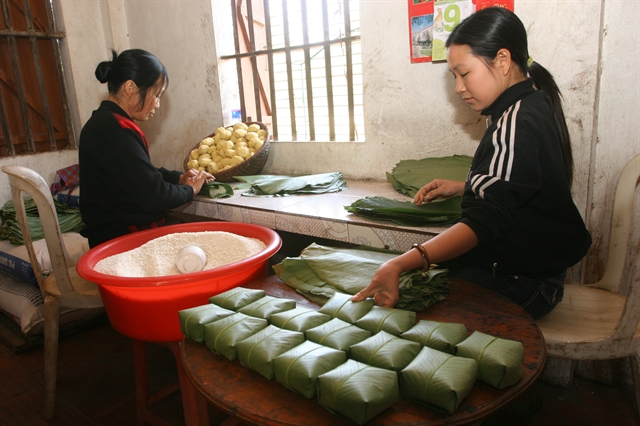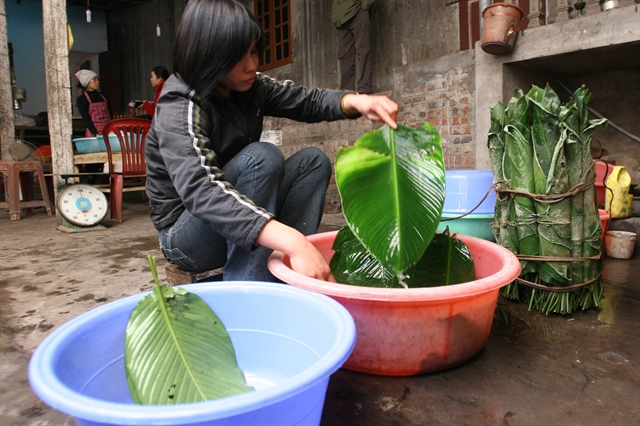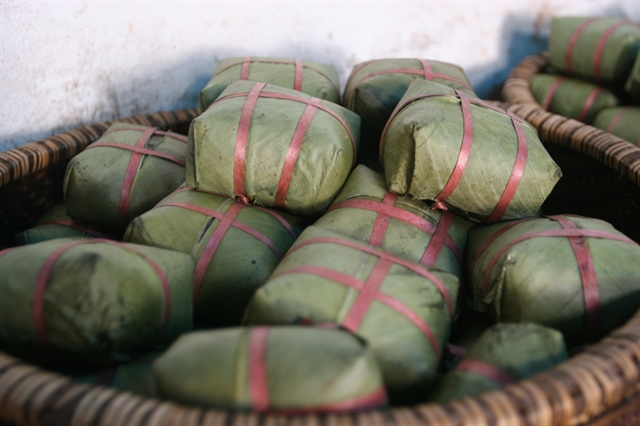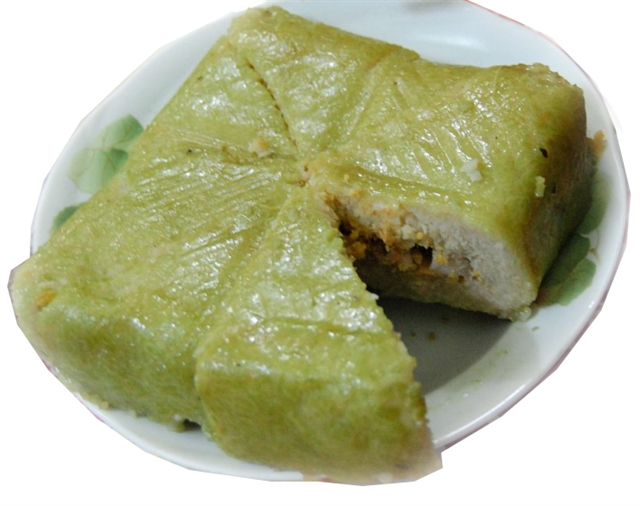Tết (Lunar New Year) is fast approaching, and people in Bờ Đậu Village in the northern province of Thái Nguyên are busy preparing bánh chưng (square glutinous rice cakes).
Tết (Lunar New Year) is fast approaching, and people in Bờ Đậu Village in the northern province of Thái Nguyên's Cổ Lũng Commune are busy preparing bánh chưng (square glutinous rice cakes).

Square sticky rice cakes are made by the skilled hands of locals in Bờ Đậu Village. VNS Photos Trương Vị
The village has specialised in making the cakes for nearly 60 years.
The village's bánh chưng are reportedly among the best in the north, and are sold widely throughout the country and exported to Vietnamese communities overseas.

Dong leaves taken from a nearby forest.
Nguyễn Bích Liên, head of a management board that oversees the craft, said some 50 households were making a living from bánh chưng.
Each family produces 100-150 cakes per day, but the amount sharply increases for Tết.
Their products are mostly traditional square (northern style) or cylinder (southern style) sticky rice cakes.

The appearance and taste depend on the skills of the cooks.
“Our cakes are not only famous in this area,” Liên said. “Many Vietnamese across the country as well as Vietnamese abroad order our cakes."
Liên said that every August, the village opens a training class on food hygiene for locals, where lecturers from the province’s Department of Industry and Trade teach people about the importance of clean food. After three days of training, trainees have to sit a test.
“Only people who pass the test get a certificate and are allowed to continue making bánh chưng,” Liên said.
According to Ngô Tiến Sỹ, who owns the Sỹ Oanh Bánh Chưng Shop, the cakes were all handmade, and locals did not use frames to wrap the cakes like in other areas.
“That’s why the quality and appearance of the cakes depends on skills of the cooks,” he said.
“If the cakes are wrapped tightly in leaves, they maintain their shape while being cooked,” he said. “The cakes look good while the sticky rice inside is soft, sticky and sweet.”

The village's bánh chưng are reportedly among the best in the north.
It takes 8-10 hours to boil the cakes, and during that time, the cooks have to continue adding water to ensure they don't go dry.
Sỹ said ingredients were bought from trustworthy suppliers who ensured the ingredients’ quality and origins.
The sticky rice comes from Bắc Kạn Province or Hưng Yên Province.
Pork is marinated with pepper before it is stuffed inside layers of sticky rice and green beans. Locals use green dong (Phrynium) leaves from a nearby forest to wrap the cakes.
The water used is taken from a spring behind the village, which is believed to be holy.

Holy water is believed to provide a special taste for the delicacy.
“When they're boiled with water from the mountain, the cakes have a unique flavour,” Liên said.
Locals say Nguyễn Thị Xuân, also known as Đấng following her husband’s name, was the first person to make the cakes here. She opened her first shop in 1960, which quickly allured a lot of local customers.
She handed down the craft down to her children and grandchildren in her older years, and gradually, the trade has become the main source of income for the village.
People in Cổ Lũng Commune used to grow rice and tea, living mud huts.
Now the cakes have improved their lives. VNS